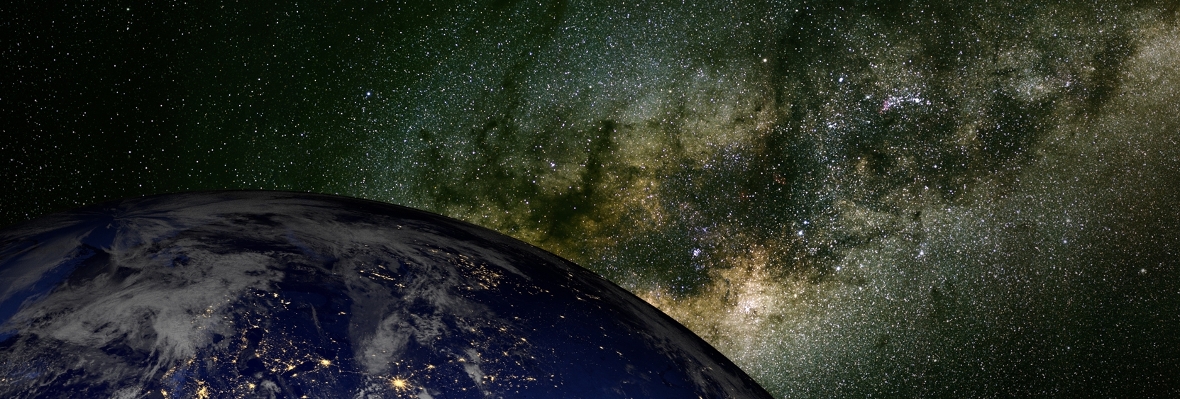To the edge of space and time
Large telescopes can look so deep into the Universe that they can also look back billions of years in time. From 2018, the successor of the Hubble Space Telescope, the James Webb Space Telescope, will be able to see the period just after the Big Bang, when the first stars and galaxies formed. Astronomers from Leiden are helping build instruments for the James Webb, and can’t wait to use it for observations.
Thousands of millions years back in time
If we ‘only’ look 100 million light years around us, we see a peaceful part of the Universe, with neat old galaxies that look like the Milky Way, the galaxy that we are part of. The space in between is more or less empty. But if you use modern telescopes to look billions of light years away – and thus billions of years back in time – the ‘early’ universe looks very different indeed. Many galaxies are chaotic in shape and produce new stars at a rapid rate or have a gigantic black hole at their centre that sends out clusters of particles into space, causing shock waves there. And although fledgling galaxies can only grow gradually according to computer simulations, by consuming their little brothers, they appear to be large and massive surprisingly soon after the Big Bang.

On to new long-distance records
Marijn Franx has been involved in the Hubble Space Telescope’s voyage of discovery into the early Universe from the outset: ‘Hubble radically changed this field of research at the time. In 1996, it proved easy for Hubble to see such extremely distant galaxies, because they were much brighter than expected.’ In 2016, Franx was on a team that discovered the current long-distance record holder, galaxy GN-z11, at 13.4 billion light years away, when the universe was only 400 million years old.
Franx: ‘Hubble has now done all that it can, but its successor, the James Webb Space Telescope, will be able to see much further back in time. We have regular discussions with the people at NASA who are building it about the decisions that are made. In such projects, you never have enough money to do everything, but we as users tell them: ‘This is what we really need.’
It won’t be possible to perform maintenance on the James Webb, because it will be parked in space a long way from Earth. So decisions needed to be made 15 years ago about which observation instruments will be sent up with it for the next ten years, and this will greatly determine what the telescope will be able to see.

Turbulent childhood
Distance records in themselves are not that important. What astronomers want to understand is the turbulent childhood of the Universe. In galaxies, new stars constantly form from gas and dust clouds, but at present, in our corner of the Universe, stars form at a slow rate because there is hardly any gas and dust left between the stars. It you apply this logic to young galaxies, they must therefore have contained a lot of gas and dust. The mega-telescope on Earth, ALMA, was specially built to observe the millimetre radiation that this dust radiates. And ALMA is still making observations aplenty.
Franx: ‘We thought at the time that when the James Webb was launched ALMA would have made these observations, but ALMA sees very few extremely distant galaxies. It’s a real mystery. Perhaps they contain too little dust? We have therefore adjusted the James Webb program, to make it better at detecting those galaxies.’

